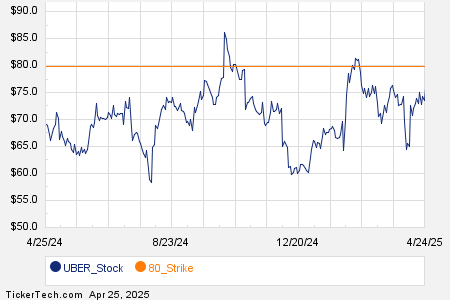“`html
Potential for Nvidia Stock to Shift Amid AI Market Dynamics
Nvidia stock (NASDAQ:NVDA) has surged over 180% this year, becoming a leading player in the AI boom. Yet, could this impressive upward trend reverse, leading to a fall of over 50%? At the current market price of $140, Nvidia trades at more than 80 times its trailing earnings and 50 times projected FY’25 earnings. These valuations may appear steep but are justified by the company’s recent rapid growth as demand for its graphics processing units (GPUs) has soared, largely driven by artificial intelligence applications.
Stock markets often take short-term trends and apply them to long-term forecasts. In Nvidia’s situation, the current stock price assumes that growth in demand, pricing power, and profitability from Nvidia’s accelerators will remain robust as the generative AI trend persists. However, this assumption carries significant risks, indicating a considerable correction could be on the horizon. Moreover, the broader economic climate adds another layer of uncertainty. Despite a market rally following Donald Trump’s election, inflation risks loom, exacerbated by potential tariffs and deportation policies. These factors could affect interest rates and subsequently impact valuations of high-growth companies like Nvidia. (S&P To Crash More Than 40%?) This assessment presents a counter to our analysis of Nvidia’s potential to reach $300, illustrating the inherent volatility of the stock.
Nvidia’s Performance and Volatility Over Time
Nvidia stock has exhibited remarkable volatility, rising over tenfold from $13 in early January 2021 to around $140. In that same time frame, the S&P 500 increased by approximately 50%. The journey hasn’t been smooth; returns were 125% in 2021, followed by a 50% drop in 2022, and then a remarkable 239% rise in 2023. Particularly notable is Nvidia’s poor performance during 2022, where it recorded a 50% drop compared to the S&P 500’s -19% return. In contrast, the Trefis High Quality (HQ) Portfolio—a collection of 30 stocks—has consistently outperformed the S&P 500 each year during this period, reflecting better returns with less risk and a more stable ride.
Possible Slowdown in Nvidia’s Growth
Currently, Nvidia’s revenues have skyrocketed, nearly tripling in the last year as companies increasingly utilize GPUs for AI tasks. Still, a slowdown in growth rates is a valid concern.
What’s Behind This Concern?
Challenges in the market for GPU chips and the wider AI landscape are evident, with many of Nvidia’s customers still operating at a loss. Building and training large language models incurs substantial costs. According to Sequoia, an AI-focused venture capital firm, the industry spent about $50 billion on Nvidia chips last year, which could exceed $100 billion when additional investments are considered. Despite these expenditures, revenue generated has only been about $3 billion, with few AI services beyond ChatGPT boasting a substantial customer base. This situation might lead companies to invest in AI due to fear of missing out (FOMO), rather than a solid strategy for returns. As shareholders demand better returns, spending on capital may decline, posing risks for Nvidia. Additionally, the Federal Reserve’s decision to keep rates high further complicates the potential for profitability among AI GPU investments.
Moreover, major AI projects typically unfold in two phases: an intensive training phase, which currently drives Nvidia’s demand, and a deployment phase with lower power needs. Presently, many companies are focused on the training phase, but as they transition to the deployment phase, demand for GPUs may diminish.
Even if demand remains strong, Nvidia could face challenges. Supply chain constraints and operational hiccups pose risks. Nvidia’s plan to release a new AI chip series every year increases vulnerability to errors; for example, the recent Blackwell chip faced design issues that delayed its launch. Although resolved, a recent report suggests overheating problems with the chip in certain server racks, indicating risks tied to Nvidia’s aggressive timelines. Additionally, Nvidia relies heavily on Taiwan Semiconductor Manufacturing Company (TSMC) for production, which can lead to bottlenecks if TSMC’s schedules do not align with Nvidia’s plans. TSMC requires at least 18 months to establish new manufacturing lines, highlighting possible production misalignments that could hinder Nvidia’s ability to meet demand.
Currently, Nvidia’s revenues are projected to double this year to around $126 billion, based on consensus estimates. However, if growth rates slow to about 15% over the next two years due to the factors mentioned, sales might only rise from about $61 billion in FY’24 to approximately $166 billion by FY’27.
Nvidia’s Margins Face Pressure
Nvidia’s margins (net income as a percentage of revenues) have been on the rise, climbing from roughly 25% in FY’19 to about 49% in FY’24, driven by improved economies of scale and a favorable product mix emphasizing complex data center products. Our dashboard provides an overview of the factors influencing Nvidia’s net income changes.
However, margins may be at risk of declining to around 35%. The main factor is increasing competition from rival chipmakers like AMD, which is investing heavily to close the gap. AMD claims that its new Instinct MI300X chip outshines Nvidia’s chips in several areas, while Intel is also seeking a market share with more competitively priced AI chips. Furthermore, companies such as IBM have announced collaborations with AMD to integrate Instinct MI300X accelerators into their cloud services. Large tech companies, including Google—one of Nvidia’s top GPU customers—are actively developing their own AI processors. This intensifying competition threatens to make Nvidia’s remarkable revenue growth and historically high margins less sustainable.
Assessing Nvidia’s Valuation
By combining projections for a 30% growth in revenue between FY’25 and FY’27, along with margin considerations…
“`
Nvidia’s Stock Faces Potential Decline Amid Earnings Concerns
As Nvidia’s market position shifts, investors may need to reassess future earnings. If Nvidia’s earnings decrease by 10% by 2027, this decline could push the company’s price-to-earnings (P/E) ratio down from about 50x to approximately 25x. Such a shift could lead to Nvidia’s stock dropping over 50%, reaching around $65 per share.
Timeframes for these changes don’t significantly impact the outcome; whether it takes two years or five years, Nvidia’s GPU sales could see challenges. If competition intensifies, the stock may experience notable corrections, presenting a bumpy road ahead for investors. (Should you Buy, Sell, or Hold Nvidia Stock?)
Despite the potential for downturns, there remains a strong argument for Nvidia’s long-term growth. If reliable performance is a priority for you, consider the Trefis High Quality (HQ) Portfolio for investment opportunities.
| Returns | Nov 2024 MTD [1] |
2024 YTD [1] |
2017-24 Total [2] |
| NVDA Return | 6% | 184% | 5246% |
| S&P 500 Return | 3% | 23% | 162% |
| Trefis Reinforced Value Portfolio | 3% | 19% | 780% |
[1] Returns as of 11/19/2024
[2] Cumulative total returns since the end of 2016
Invest with Trefis Market-Beating Portfolios
See all Trefis Price Estimates
The views and opinions expressed herein are the views and opinions of the author and do not necessarily reflect those of Nasdaq, Inc.

